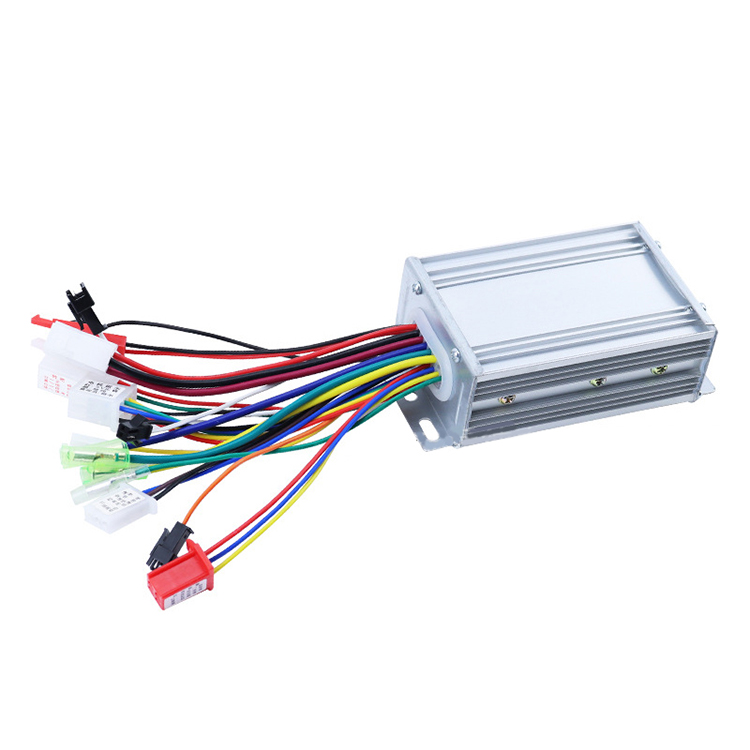An electric vehicle (EV) controller is an essential component of an electric vehicle’s powertrain system. It acts as the intermediary between the battery and the electric motor, regulating the power flow to ensure smooth operation and efficient energy use. EV controllers play a critical role in determining a vehicle’s performance, energy efficiency, and driving experience. Choosing the right controller is important for both manufacturers and EV enthusiasts.

Key Features of Electric Vehicle Controllers
1. Motor Type Compatibility
One of the primary features of an EV controller is its compatibility with different types of electric motors. The common motor types in electric vehicles are brushed DC motors, brushless DC (BLDC) motors, and three-phase AC induction motors.
Brushed DC Motors: Controllers for brushed motors are generally simpler and more affordable. They regulate voltage and current to control motor speed.
Brushless DC Motors: BLDC controllers are more sophisticated, using electronic commutation to manage the motor’s performance efficiently. They provide higher efficiency and lower maintenance compared to brushed motors.
AC Induction Motors: Controllers for AC motors typically use advanced algorithms such as field-oriented control (FOC) to manage torque and speed precisely, offering smooth performance and better energy efficiency.
When selecting a controller, it is essential to ensure it is designed for the type of motor used in the vehicle to achieve performance.
2. Voltage and Current Ratings
The voltage and current ratings of an EV controller are critical for ensuring compatibility with the battery and motor. Controllers are designed to handle a specific voltage range, typically from 24V to 96V or higher, depending on the vehicle’s design.
The current rating determines how much power the controller can deliver to the motor. Higher current ratings allow for stronger acceleration and better performance but may require additional cooling. Selecting a controller with appropriate voltage and current ratings ensures that the system operates efficiently without overloading the components.
3. Throttle and Speed Control
EV controllers manage speed and acceleration by processing signals from the throttle. Many controllers support analog throttles, while advanced models may support digital throttles for more precise control.
Controllers can offer various driving modes, such as eco, normal, and sport, allowing drivers to adjust the vehicle’s responsiveness and energy consumption. Some models also include regenerative braking functions, which help recharge the battery when decelerating, improving overall efficiency and extending driving range.
4. Protection Features
Modern EV controllers include several protection features to ensure safety and reliability. Common protections include:
Overcurrent Protection: Prevents the motor and controller from drawing excessive current that could damage components.
Overvoltage and Undervoltage Protection: Protects the system from voltage fluctuations in the battery pack.
Temperature Protection: Monitors controller and motor temperature to prevent overheating.
Short-Circuit Protection: Safeguards against electrical faults that could cause damage or fire.
These protection features are essential for maintaining the longevity of both the controller and the vehicle’s motor system.
5. Programmability and Customization
Many modern EV controllers allow users to customize parameters such as acceleration curves, regenerative braking strength, and top speed limits. Programmable controllers are particularly useful for electric vehicle enthusiasts who wish to optimize performance for specific driving conditions or customize their vehicle’s driving experience.
Some controllers also support communication protocols such as CAN bus, enabling integration with battery management systems (BMS) and other electronic components for more intelligent control.
6. Cooling System
EV controllers generate heat during operation, especially in high-power vehicles. Efficient thermal management is critical to maintaining consistent performance and preventing overheating. Controllers may feature passive cooling through heatsinks or active cooling with fans or liquid cooling systems. Selecting a controller with an appropriate cooling method ensures reliable operation during extended use or high-load conditions.